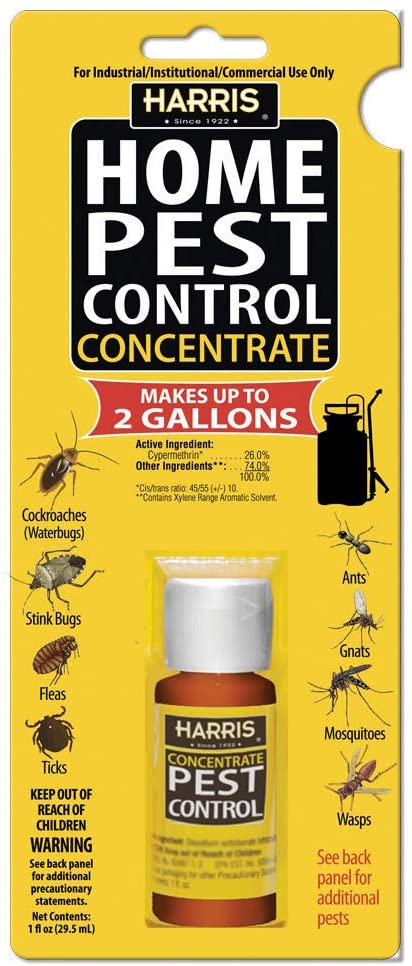Bed Pest Treatment Malfunction: Contrasting Chemical Vs. Non-Chemical Solutions
In the world of parasite control, specifically when dealing with the relentless concern of bed pests, the selection between chemical and non-chemical therapy options can be a critical one. Both methods supply distinct benefits and disadvantages, influencing factors such as effectiveness, safety considerations, and total cost. By analyzing the nuanced information of each technique, a more clear understanding of which path to go after in resolving a bed bug invasion can be acquired.
Performance of Chemical Treatments
Chemical treatments for bed pest problems have actually been commonly recognized for their powerful and rapid effectiveness in removing these insects. When thinking about the efficiency of chemical treatments, it is critical to understand that they can give a extensive and quick service to a bed pest issue. Expert pest control men usually depend on insecticides to target bed insects at different stages of their life process, including eggs, fairies, and grownups. These chemicals generally function by interfering with the bed bugs' nerves, leading to paralysis and eventual death.
Moreover, chemical treatments have the benefit of providing recurring results, implying that they can remain to eliminate bed pests even after the initial application. This residual action is specifically helpful in combating any possible re-infestations. Additionally, the fast activity of chemical therapies can bring relief to people dealing with extreme bed insect problems, allowing them to reclaim control of their space promptly.
Safety And Security Worry About Chemical Solutions
One essential aspect that needs cautious consideration when utilizing chemical options for bed pest therapy is making sure the safety and security of owners and the setting. Exposure to particular chemicals used in bed pest therapies can lead to respiratory system problems, skin irritation, or various other adverse responses, particularly in people with pre-existing conditions or level of sensitivities.
Furthermore, the ecological impact of chemical remedies is an additional substantial factor to consider. Some pesticides used in bed insect therapies might be unsafe to beneficial pests, wild animals, and ecosystems if they seep right into the soil or water systems. It is vital to utilize chemical treatments deliberately, adhering to security standards, and thinking about less harmful alternatives to mitigate these dangers and make certain the effective and secure management of bed bug infestations.
Benefits of Non-Chemical Strategies
Thinking about the possible safety and security worries and environmental influence related to chemical remedies for bed pest therapy, exploring non-chemical methods provides an appealing alternative with a number of distinctive advantages. Non-chemical techniques offer a safer choice for houses, specifically those with kids, people, or family pets conscious severe chemicals. These methods remove the risks of direct exposure to toxic compounds, decreasing the possibility for damaging wellness results. Furthermore, non-chemical treatments are ecologically friendly, as they do not add to air or water pollution, making them a lasting option for insect control.
In addition, non-chemical options can be reliable in targeting bed bugs, including hard-to-reach areas where chemical therapies may not penetrate. Methods such as heat therapy, vacuuming, vapor cleansing, and bed mattress encasements offer detailed removal without making use of damaging chemicals. Furthermore, non-chemical strategies can be much less disruptive, needing very little preparation and enabling quicker reentry into dealt with locations. Overall, going with non-chemical bed pest therapy techniques not only focuses on security and environmental management yet additionally ensures effective and thorough bug control.
Limitations of Non-Chemical Treatments

Furthermore, non-chemical therapies usually require several applications to achieve effective elimination. This can be time-consuming and might not always guarantee total elimination of all bed pests and their eggs, especially in hard-to-reach or concealed places.
In addition, the success of non-chemical treatments greatly counts on proper execution and thoroughness, which can be testing for individuals without professional expertise. Inadequate application of non-chemical techniques might cause incomplete removal, causing relentless invasions and the need for extra treatments.
Therefore, while non-chemical therapies have their benefits, it is crucial to recognize these limitations and consider them when establishing one of the most reliable technique for managing bed pest infestations.
Expense Contrast: Chemical Vs. Non-Chemical Options
Given the constraints connected with non-chemical treatments, an essential facet to examine in the context of bed pest administration is the price comparison in between chemical and non-chemical choices. Chemical treatments normally involve the application of pesticides by specialists, which can vary from $250 to $900 per area, depending upon the severity of the infestation bug control companies and the size of the location to be treated. In contrast, non-chemical treatments like warmth therapy or steam can be much more pricey, with prices ranging from $1,000 to $6,000 for a whole home. While the preliminary price of chemical treatments might seem reduced, multiple therapies may be required to completely get rid of the invasion, possibly boosting the overall cost. On the various other hand, non-chemical choices may give a much more lasting and environmentally friendly service, although they can be cost-prohibitive for some individuals. Inevitably, when taking into consideration the cost of bed pest therapy options, it is essential to consider the in advance expenses against the effectiveness and long-lasting sustainability of the picked method.
Verdict

Considering the possible safety problems and ecological effect connected with chemical remedies for bed pest therapy, checking out non-chemical techniques provides an appealing option with several distinctive advantages.Given the constraints associated with non-chemical therapies, an essential aspect to assess in the context of bed insect administration is the cost contrast between chemical and non-chemical options. In comparison, non-chemical therapies like warmth treatment or steam can be much more expensive, with prices varying from $1,000 to $6,000 for an entire home. While the why not look here initial cost of chemical treatments may appear reduced, several treatments may be required to completely remove the invasion, potentially raising the overall expense.In final thought, when contrasting chemical and non-chemical bed pest therapy choices, it is essential to think about effectiveness, safety and security, advantages, constraints, and price.